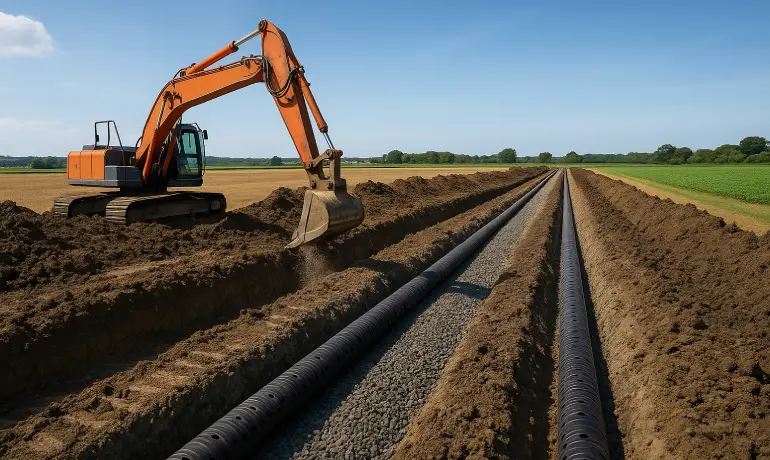Malcolm Spalding
The work was to make a sewer connection to one of our buildings. AFS were patient, helpful and professional throughout. Special thanks to Dan Ford and Steve for an excellent job.
We design and install effective land drainage systems to remove excess surface water, prevent flooding, stop waterlogging and restore natural ground drainage for homes, gardens, farmland and commercial sites. From French drains and perforated land drains to complete surface water management systems, we provide long-term solutions tailored to your soil type and landscape.
Emergency Services & Enquiries
Real feedback from homeowners and businesses across Hampshire, Surrey & West Sussex.
Our fully accredited engineers are ready to assist 24/7.
Emergency Services & Enquiries

Land drainage systems are essential for managing excess rainwater, waterlogged soil, marshy gardens and poor natural infiltration. Using perforated land drains, gravel trenches, French drains and engineered pipe networks, we create routes for water to disperse safely away from your property or land. Every system is designed around soil permeability, gradients, ground levels and water flow behaviour.
Our land drainage services cover everything from small domestic garden drains to large rural projects, farmland drainage, paddocks, commercial plots and equestrian land. We also install feed drains leading to soakaways, attenuation systems and stormwater networks to prevent long-term flooding issues.
Land drainage is essential in areas with poor natural infiltration or where rainwater pools on the surface. Customers typically request land drainage for issues such as:
Our land drainage systems include full assessments, trench mapping, pipe layout design and long-term drainage performance planning.
Our structured land drainage process ensures long-lasting water control and effective ground drainage:
Every system includes a full drainage layout, flow guidance and long-term recommendations for maintaining peak performance.
If your garden, land or commercial site is flooding or water is continuously pooling, our emergency team can install temporary or permanent drainage solutions quickly.
We provide rapid response for domestic, rural, agricultural and commercial land drainage issues.
Our land drainage services include French drains, perforated land drainage pipes, gravel trench systems, surface water control, ditching, trenching, attenuation feeds, soakaway connections and complete stormwater management.
All installations are completed using high-quality materials including perforated pipework, geo-textiles, washed stone, infiltration trenches and robust water management systems.
We support homeowners, farmers, landscape gardeners, equestrian centres, commercial sites and rural estates with tailored land drainage solutions.
To arrange professional land drainage installation, call 01420 561661 or complete our online enquiry form. Free quotations available.
ReliableProfessional24/7 Support